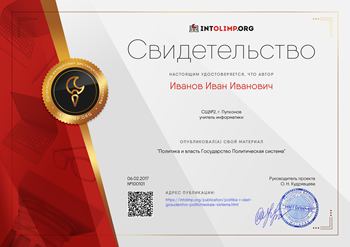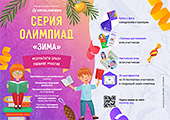Министерство науки и высшего образования Российской Федерации
федерального государственного бюджетного образовательного учреждения высшего образования
«Российский экономический университет имени Г.В. Плеханова»
МОСКОВСКИЙ ПРИБОРОСТРОИТЕЛЬНЫЙ ТЕХНИКУМ
УТВЕРЖДАЮ
Заместитель директора
по учебной работе
_______________ Д.А. Клопов
«____» _____________20____ г.
МЕТОДИЧЕСКИЕ РЕКОМЕНДАЦИИ
ПО ПРОВЕДЕНИЮ КОНСУЛЬТАЦИЙ ДЛЯ ИТОГОВОЙ АТТЕСТАЦИИ
ПО ДИСЦИПЛИНЕ: БД.03 «ИНОСТРАННЫЙ ЯЗЫК»
Специальность:
09.02.01 Компьютерные системы и комплексы
09.02.06 Сетевое и системное администрирование
09.02.07 Информационные системы и программирование
10.02.05 Обеспечение информационной безопасности автоматизированных систем
Форма проведения: КОНСУЛЬТАЦИЯ
РАССМОТРЕНО
На заседании цикловой методической комиссии
«Иностранных языков»
Протокол № 7 от 05.02.2020 г.
Председатель цикловой методической комиссии ____________/А.Д. Завьялова/
Разработчики:
Лосикова А.Л., преподаватель ФГБОУ ВО РЭУ имени Г.В. Плеханова
Николаева Н.Г., преподаватель ФГБОУ ВО РЭУ имени Г.В. Плеханова
Пояснительная записка
Консультация – это аудиторное занятие, направленное на решение интеллектуальных и психологических вопросов, возникших у учеников при подготовке к экзамену. Консультации перед экзаменом являются необходимой частью экзамена, в которой нужно сделать обзор пройденного материала, а также более подробно разобрать возникшие вопросы или сложности, которые были выявлены в процессе работы.
Формы:
Консультации проводятся в виде практического занятия, а также преподаватель дает ответы на возникшие вопросы и задания.
Цели:
1. Дать организационные указания о порядке работы при подготовке к экзамену и о порядке проведения экзамена:
- ознакомить студентов с типовыми экзаменационными заданиями;
- довести до сведения учащихся критерии оценивания экзаменационного задания: основные требования, критерии отметок;
- раскрывая содержание вышеизложенных требований, преподаватель иллюстрирует возможности их выполнения конкретными примерами по всем тема рабочей программы;
2. Консультация как форма организации обучения выполняет корректирующую функцию, помогая студентам сориентироваться в требованиях и определить важность и удельный вес отдельных разделов в структуре программы. В ходе этих консультаций выделяются ключевые положения, глубокое осмысление которых позволяет учащимся усваивать знания в системе, способствует более легкому запоминанию объемного материала. Таким образом, основная содержательная часть консультации:
- обобщение и систематизация изученного материала, приведение изученного материала дисциплины в стройную систему;
- определение границ минимума и максимума работы над темами;
- объяснение наиболее трудного материала, сложных для самостоятельного осмысления проблем;
- анализ возможных трудностей, конкретные советы по предупреждению типичных ошибок.
3. Психологическая подготовка студентов к экзамену. С психологической точки зрения консультация является очень важным занятием по подготовке к экзамену. Студенты должны быть уверенными в том, что они смогут успешно сдать экзамен.
Для успешной подготовки к итоговому экзамену по дисциплине БД.03 «Иностранный язык» студентам следует обратить особое внимание на повторение тем, согласно стандарта.
1. Present Simple Tense
2. Present Continuous Tense
3. Present Perfect Tense
4. Present Perfect Continuous Tense
5. Past Simple Tense
6. Past Continuous Tense
7. Past Perfect Tense
8. Past Perfect Continuous Tense
9. Инфинитив и герундий
10. Модальные глаголы (may, can/be able to, must/have to/should; need, shall, could,might, would)
11. Существительные. Множественное число. Исключения
12. Прилагательные. Степени сравнения
13. Наречия. Much/many, few/a few, little/a little
14. Артикль (определённый, неопределённый, нулевой)
15. Аффиксы для образования глаголов: re-, dis-, mis-; -ize/ise
16. Аффиксы для образования существительных: -er/or, -ness, -ist, -ship, -ing, -sion/tion,-ance/ence, -ment, --ity
17. Аффиксы для образования прилагательных: -y, -ic, -ful, -al, -ly, -ian/an, -ing, -ous, -ible/able, -less, -ive, inter-
18. Отрицательные префиксы un-, in-/im
Задание № 1. Установите соответствие между текстами A-G и заголовками . Запишите в поле для ответа последовательность цифр, соответствующих текстам ABCDEFG. Используйте каждую цифру только один раз. В задании один заголовок лишний.
Perm’s industry
City’s cultural life
Natural resource as attraction
The greatest achievement
Traditionally liberal
Beneficial location
Where the name comes from
Too important to be left alone
The word “Perm” first appeared in the 12th century in the Primary Chronicle, the main source describing the early history of the Russian people. The Perm were listed among the people who paid tribute to the Rus. The origin of the word “Perm” remains unclear. Most likely, the word came from the Finno-Ugric languages and meant “far land” or “flat, forested place”. But some local residents say it may have come from Per, a hero and the main character of many local legends.
Novgorodian traders were the first to show an interest in Perm. Starting from the 15th century, the Muscovite princes included the area in their plans to create a unified Russian state. During this time the first Russian villages appeared in the northern part of the region. The first industry to appear in the area was a salt factory, which developed on the Usolka river in the city of Solikamsk. Rich salt reserves generated great interest on the part of Russia’s wealthiest merchants, some of whom bought land there.
The history of the modern city of Perm starts with the development of the Ural region by Tsar Peter the Great. Perm became the capital of the region in 1781 when the territorial structure of the country was reformed. A special commission determined that the best place would be at the crossroads of the Trans-Siberian Railroad, which runs east-west and the Kazan line, which runs north-south. This choice resulted in Perm becoming a major trade and industrial centre. The city quickly grew to become one of the biggest in the region.
Perm is generally stable and peaceful, so the shocks of 1917 did not reach it right away. Neither did they have the same bloody results as in Petrograd. Perm tried to distance itself from the excesses and did not share the enthusiasm for change of its neighbours. Residents supported more moderate parties. They voted for the establishment of a west European style democracy in Russia. Unfortunately, the city could not stay completely unaffected, as both the White and the Red armies wanted its factories.
Perm’s desire for stability and self-control made the region seem like a “swamp” during the democratic reforms of the 1990s. Unlike other regions, there were no intense social conflicts or strikes. Nevertheless, Perm was always among the regions that supported the democratic movement. In the 1999 elections, the party that wanted to continue the reforms won a majority in the region. So the city got an unofficial status of “the capital of civil society” or even “the capital of Russian liberalism”.
During the Second World War many factories were moved to Perm Oblast and continued to work there after it ended. Chemicals, non-ferrous metallurgy, and oil refining were the key industries after the war. Other factories produced aircraft engines, equipment for telephones, ships, bicycles, and cable. Perm press produces about 70 percent of Russia’s currency and stamped envelopes. Nowadays several major business companies are located in Perm. The biggest players of Russian aircraft industry are among them.
Perm has at least a dozen theatres featuring productions that are attracting audiences from faraway cities, and even from abroad. The broad esplanade running from the city’s main square has become the site of almost continuous international art, theatre and music fairs during the summer. Even the former prison camp with grim walls outside town was converted into a theater last July for a production of “Fidelio”, Beethoven’s opera about political repression. The performance was well-reviewed.
Задание № 2. Установите соответствие между текстами A-G и заголовками . Запишите в поле для ответа последовательность цифр, соответствующих текстам ABCDEFG. Используйте каждую цифру только один раз. В задании один заголовок лишний.
1. A good investment
2. How it all began
3. Multi-purpose constructions
4. All is well that ends well
5. A vertical marathon
6. Breathtaking athletic events
7. 21 century technology
8. Once number one globally
Radio and television towers are tall structures designed to transmit radio or television signals. However, besides serving their main function they often become tourist attractions, as a lot of them are true architectural wonders. Among some of the most famous – and tallest – towers in the world are the Tokyo Skytree, the Canton Tower in China, the CN Tower in Toronto, Canada, and the Ostankino Tower in Moscow, Russia.
The Ostankino Tower is 540 meters tall which makes it the tallest tower in Europe. When it was built in 1968, it was the tallest structure in the world, which it remained until 1975. The Ostankino Tower radio and television signal covers the area with the population of over 15 million people. The Tower also has an observation platform and a restaurant about 330 meters in the air which you can reach on one of the lifts in just 58 seconds.
The first Radio Tower in Moscow was built during the Civil War in 1922 by the outstanding Russian architect Vladimir Shukhov and is a hyperboloid structure. In fact, it was Shukhov who first invented the hyperboloid metal structure in the 1890s, inspired by the weaving of peasant baskets. Vladimir Lenin himself approved the construction of this tower which today is considered a historic and architectural monument of Soviet Constructivism.
Yet another use of television towers is holding sports events. Some of the most common ones are base-jumping, an extreme sport where participants jump off high structures with parachutes; and bungee jumping, where the jumpers are attached to a tall structure with a large elastic cord. Among the more traditional competitions is racing up the tower staircase, which was held in the Ostankino Tower up until 2000, when the tower was damaged by the fire.
The fire broke out at a height of 458 m on 27 August, 2000. It took over 300 firefighters, more than 24 hours and a lot of effort to stop it. Many people were afraid that the tower would not be able to survive and would collapse. Luckily it didn’t happen. But almost all TV channels and some radio channels stopped working for several days. The reconstruction of the tower that followed lasted until 2007. In 2009 the tower reopened its doors to tourists.
And not only to them. On July 21, 2018, Ostankino Tower was open again to 28 sportsmen from 12 countries who raced up its winding staircase. The staircase is very narrow, so the sportsmen had to run one by one with a 30 second interval between them. Only professional runners were allowed to participate. It was a German athlete Christian Riedl who made it to the top in just 9 minutes and 51 seconds, setting a new record.
It would be logical to assume that television towers are the tallest structures in the world. In fact, it had been true until 2009 when the Burj Khalifa, the tallest sky-scraper in the world, was built in Dubai. It cost about $ 1.5 billion to complete the construction of this building, but it paid off: office and apartment space pricing is over $ 40,000 per m2, and over 90% of all the apartments and offices are now occupied!
Задание № 3. Раскройте скобки, употребляя глаголы в требующемся времени.
1. The jazz band (to play) in the park now. A lot of people (to listen) to the music and they really (to have) a good time. 2. My working day (to begin) at seven o'clock. I (to get) up, (to switch) on the radio and (to do) my morning exercises. It (to take) me fifteen minutes. 3. I (drive) my car when I saw my friend and I said ‘hello’. 4. I (drive) home from work every day. 5. This restaurant (become) very popular. I am sure. 6. I (wait) for the bus when you called. 7. When .. you (arrive) home yesterday? 8. Tomorrow I (eat) sushi. 9. I (wait) for the bus at the moment 10. She (visit) London several times in the past.
Задание № 4. Раскройте скобки, употребляя глаголы в требующемся времени.
1. She (visit) probably London next year. 2. Has she decide where to go next year? Yes, she (go) to visit London again. 3. I (wait) for the bus yesterday. 4. I (drive) home from work every day. 5. What you (to read)? — I (to read) a magazine. — How long you (to read) it? — I (to read) it for half an hour. 6. He (not to eat) yesterday. 7. Look at this birdhouse. Mike (to make) it himself. He (to make) it last Sunday. 8. With whom you (to discuss) this question yesterday? 9.Your brother (to return) from the north? — Yes, he (to come) a few days ago. 10. His sister (to study) English every day.
Задание № 5. Прочитайте приведенные ниже тексты. Преобразуйте, если необходимо, слова, напечатанные жирными буквами в конце строк так, чтобы они грамматически соответствовали содержанию текстов.
Who really discovered America?
Everybody knows that Christopher Columbus discovered America. However, America ___________ after Amerigo Vespucci who explored the eastern coast of South America. NAME
Was he really the first to reach the continent? The great Norwegian explorer Thor Heyerdal believed that ancient people ___________ able to build boats that could cross oceans. BE
To test his ideas, Heyerdal decided to build a copy of an ancient Egyptian boat. On May 25, 1969 the boat called Ra ___________ a port in Morocco. LEAVE
On May 17, 1970 Ra with two ___________ on board successfully crossed the Atlantic, proving that ancient civilizations had enough skill to reach America long before Columbus. SEAMAN
Задание № 6. Прочитайте приведенные ниже тексты. Преобразуйте, если необходимо, слова, напечатанные жирными буквами в конце строк так, чтобы они грамматически соответствовали содержанию текстов.
Labor Day
Labor Day is a holiday in honor of workers. On September 5, 1882 the ___________ Labor Day parade was held in New York. ONE
20,000 workers marched up Broadway, ___________ banners "Labor creates all wealth". After the parade, there were picnics all around the city. CARRY
The next year even ___________ people took part in the celebration. In 1894, Congress made it a national holiday. Today most Americans consider Labor Day the end of the summer. They enjoy the last three-day weekend on the beaches and in the parks. MANY







